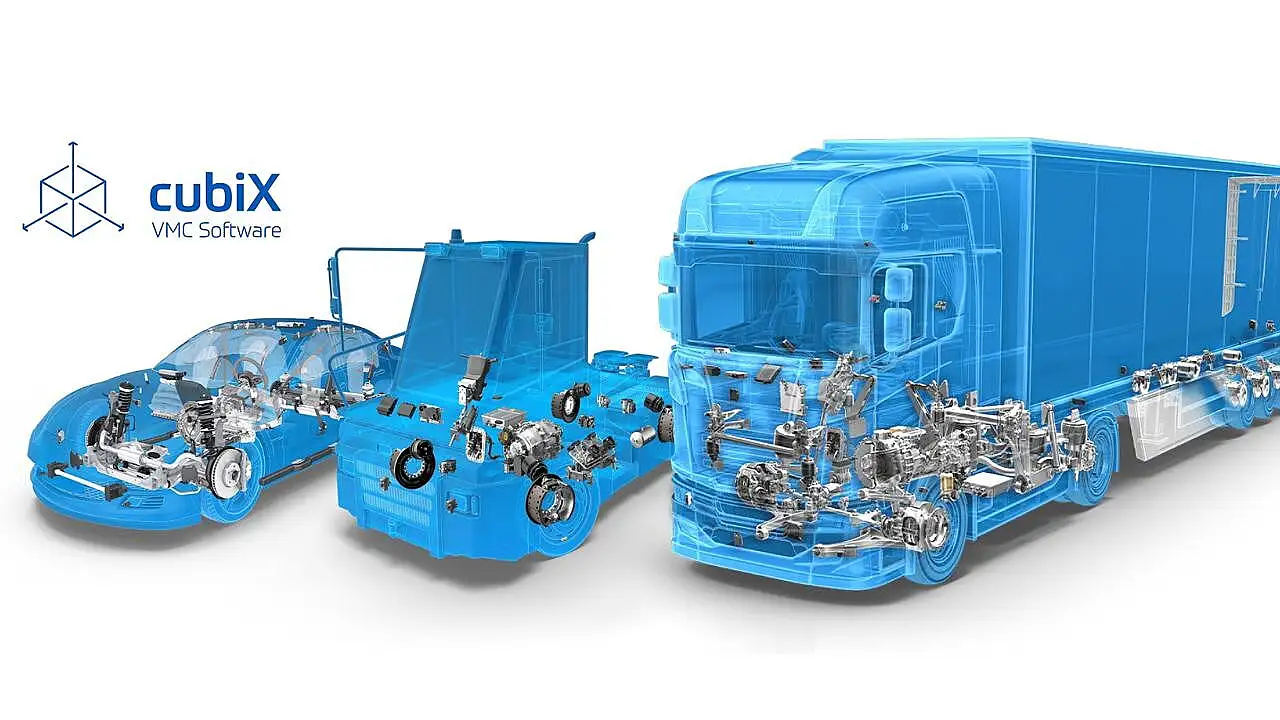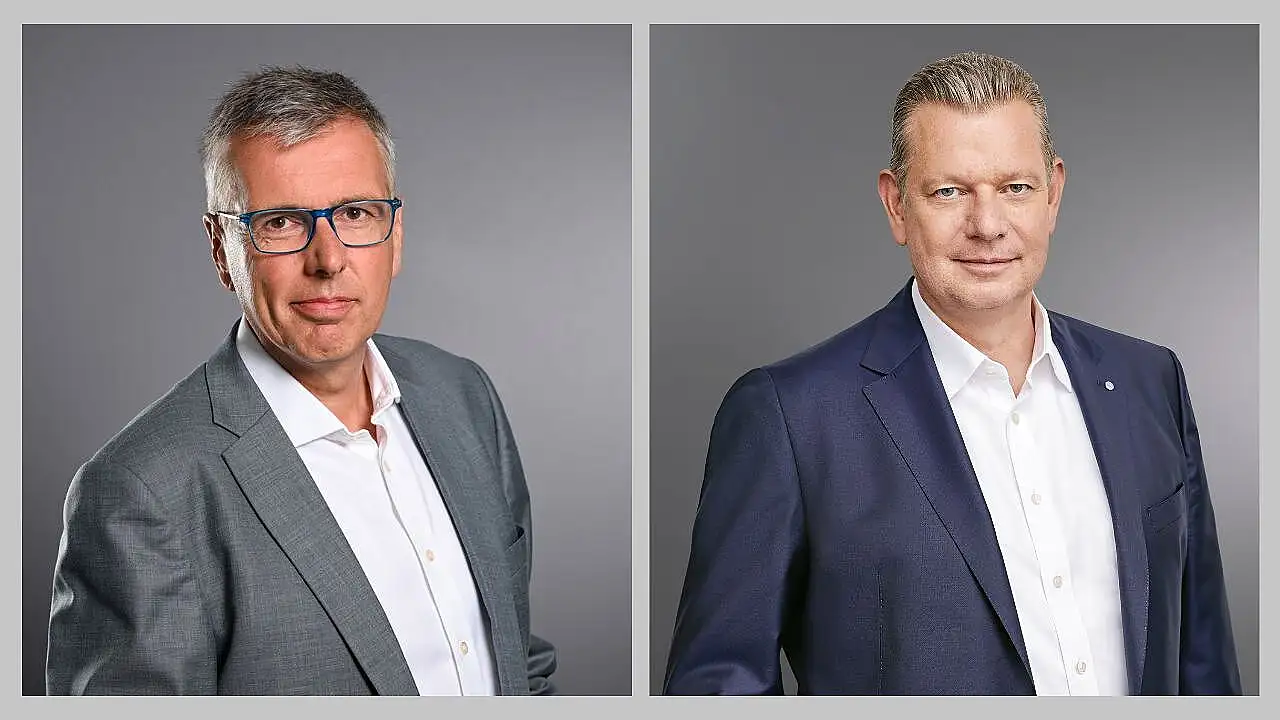
In anticipation of IAA Transportation 2024, ZF showcases its latest advancements in decarbonisation, chassis technology, safety, and digitalisation at its Global Technology Day.
Highlighting its commitment to innovation, the technology group introduces the TraXon 2 Hybrid, a new hybrid transmission system for heavy commercial vehicles. Under the theme 'Driving Commercial Vehicle Innovation,' the largest supplier for the commercial vehicle industry, demonstrates its extensive portfolio of solutions for the clean, safe, and comfortable mobility of the future.
The company's approach accelerates the development of cutting-edge technologies both efficiently and cost-effectively. For passenger cars, commercial vehicles, or industrial applications, ZF advances mobility through an open-technology strategy, adaptable production locations, and cross-divisional technological applications.
Beyond driving solutions for the full electrification of trucks and buses, ZF’s new TraXon 2 Hybrid transmission for heavy commercial vehicles is set to shape the transition to e-mobility and support global CO2 targets. As the number of fully electric vehicle registrations increases more slowly than expected, not only for passenger cars but also in the commercial vehicle sector, the demand for electric vehicles is stagnating, especially in Europe and the USA, leading to price competition in many markets. Nevertheless, the company is equipped to support the varied incremental steps and regional differences in demand throughout this transition. 'Thanks to our technology-open approach, the resulting broad product portfolio and the flexibility of our production facilities, we can react quickly to market changes. This enables us to combine technologies and offer our customers the optimal solution in a timely manner at every step of the transformation,' says Prof Dr Laier, Member of the Board of Management of ZF Friedrichshafen AG and responsible for the Commercial Vehicle Solutions and Industrial Technology Division as well as the Corporate Production Function.

'One of our greatest strengths is our flexibility. For more than 100 years, openness to technology has been part of the DNA of our corporate strategy. This approach continues to pay off,' says Dr Holger Klein, CEO of the ZF Group. Building Upon Strengths
To continue providing customers with technologies for clean, safe, and comfortable mobility, ZF is strategically positioning itself for the future. With a long-term strategic plan, the technology group is restructuring its organisation and accelerating development processes to keep pace with the industry's rapid changes. This new structure features robust business units for passenger cars, commercial vehicles, industrial sectors, and an efficient aftermarket network. Each segment contributes to sustaining long-term success and profitability.
Simultaneously, other areas are given the necessary space to develop more quickly and with greater agility in response to market demands, through partnerships or increased independence. For example, in the growing core market for axle system assembly, the strategic partnership with Foxconn, the world's largest manufacturer of electronic products, is driving growth and expanding the customer base for both companies. Another example is the Passive Safety Technology Division, now operating as ZF LIFETEC. 'By reinforcing our strengths, we are creating a solid and resilient ZF 'mothership,' supported by a fleet of agile 'speedboats' that help develop the core business,' says Dr Klein.
Figures from the Commercial Vehicle Division validate this strategy: 'With organic growth of 20% in 2023, our Commercial Vehicle Solutions Division outperformed the market significantly. Together with the Industrial Technology Division, we have two exceptionally strong sectors that enhance our company's overall success.'
Expanding cubiX To CVs
ZF extends its expertise across various vehicle classes, creating synergy effects and benefiting from technology transfers and economies of scale. This allows the company to quickly industrialise innovations and offer them at competitive prices, establishing itself as a leader in transformation.
One example is the cubiX vehicle motion control software, now available for commercial vehicles. With the rise of automation, electrified, and connected technologies, OEMs seek differentiation in functionality, streamlined development, and standardised interfaces. cubiX optimises driving behaviour regarding stability, safety, precision, and performance. It interfaces with virtual driver systems and vehicle actuators, ensuring optimal vehicle motion, regardless of the actuator's origin. Initially developed for passenger cars, cubiX is now customised for commercial vehicle customers.

Annotate: Revolutionising ADAS, AD Development
At its Global Technology Day, the technology company also introduced 'Annotate,' a market-ready, cloud-based AI service for developing advanced and autonomous assistance systems from Level 2+ to Level 5. Annotate serves as a reference system for sensor testing, providing high-precision checks after data annotation from road testing. Using intelligent 2D and 3D tracking algorithms, Annotate works up to ten times faster and is 80% more cost-efficient than similar products.
Enhancing Lane Change Safety
In addition, the company also showcased solutions for increased driving safety, particularly for trucks with trailers. At Jeversen, it presented a test vehicle equipped with radar and cameras to monitor traffic during automated driving. The system warns of dangerous lane changes with acoustic and visual alerts or executes safe lane changes automatically. This technology could prevent up to 12% of accidents on German roads. The company leveraged its safety technology synergies, using components tested extensively in passenger cars.
Also Read:
ZF LIFETEC Augments Automotive Safety With Dual Contour Airbag For Automated Driving